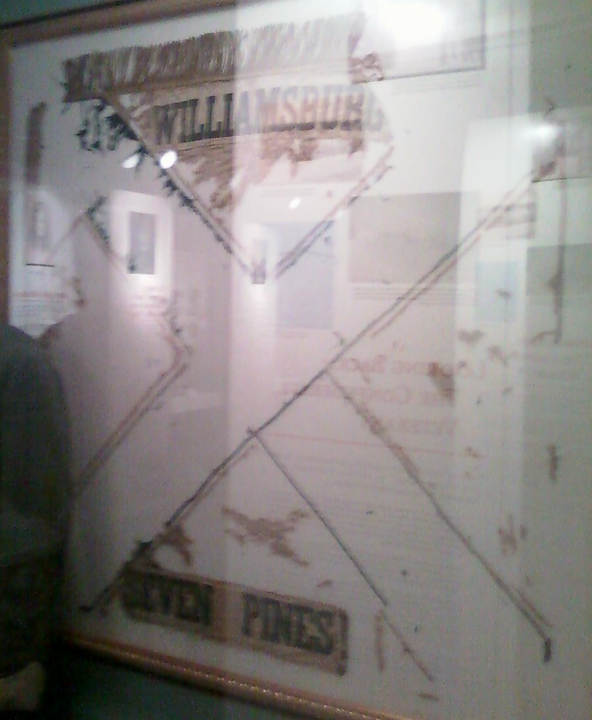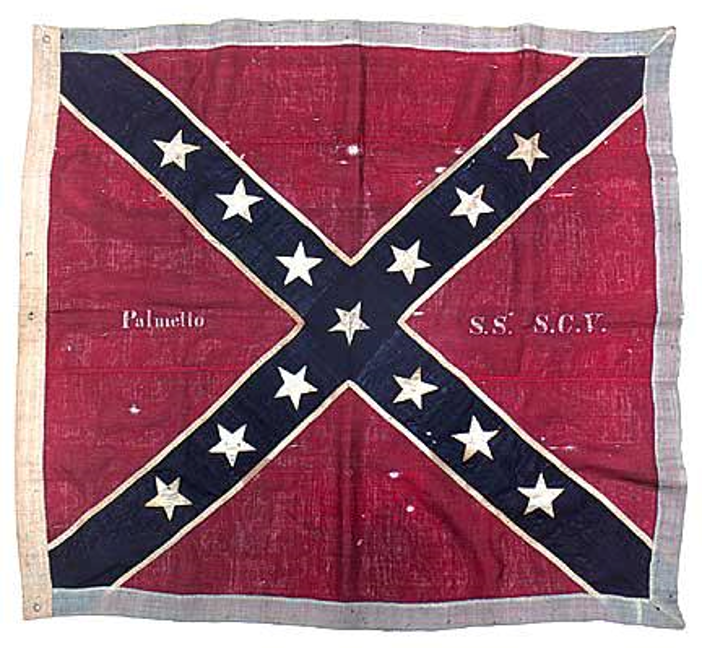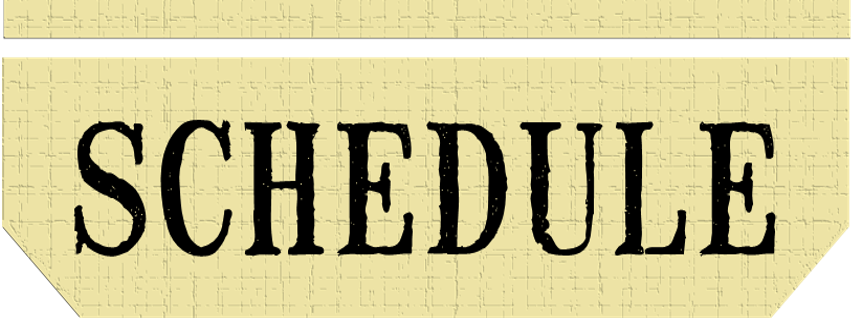PALMETTO SHARPSHOOTERS REGIMENT
SOUTH CAROLINA VOLUNTEERS, APRIL 16TH, 1862, to APRIL 10TH, 1865
The following historical information is about the service of both the regiment, and the men, of the Palmetto Sharpshooters Regiment of South Carolina Volunteers, which served in the American Civil War from April 16th, 1862, to April 10th, 1865. If you have any corrections, suggestions, or additional information, photographs, artifacts, etc., that you wish to contribute, feel free to submit the information to the Webmaster.
On April 16th, 1862, the "Palmetto Sharpshooter Regiment, South Carolina Volunteers," was officially organized while on the march in Virginia. It was a unique organization for several reasons; among them was the fact that it was one of the only South Carolina units that never served a day of in its home State, it was organized on the march and not in a camp, and unlike other regiments which were only comprised of ten (10) companies this regiment would have twelve (12).
The origins of the regiment date to the formation of the original South Carolina units for twelve months service in January of 1861; these units formed for State service, and in April of 1861 became part of the Confederate Army, agreeing to serve until the expiration of their terms of enlistment in April of 1862. The time passed quickly and at a most inopportune time the original enlistments began to expire in April of 1862, just as Union forces under Major General George B. McClellan were beginning to land on the Virginia Peninsula and begin their advance on Richmond; as a result the forces that had been stationed at Manassas under General Joseph E. Johnston began marching towards the Peninsula to meet the Federal forces. Among those units whose terms were expiring on this march were the 4th, 5th and 9th South Carolina Volunteer Infantry Regiments.
In the ensuing reorganization the 4th Regiment was reduced to a Battalion of four companies, the 5th Regiment re-organized under Colonel Asbury Coward, and the 9th Regiment was disbanded and returned to South Carolina. However, from each of these three regiments would come companies whose members chose to join Colonel Micah Jenkins in the formation of the new Regiment of Sharpshooters; from the 4th Regiment came the "Palmetto Riflemen," "Calhoun Mountaineers," "Pickens Guards," and the "Confederate Guards;" from the 5th Regiment were the "Johnson Rifles," "Morgan Light Infantry," "Pacolet Guards," "Jasper Light Infantry," and "Spartan Rifles;" and from the 9th Regiment were the "Darlington Sentinels," "Pickens Sentinels" and the "Cowpens Guards." The new regiment was officially mustered into Confederate Service on April 16th, 1862, for the duration of the war, it numbered 1,100 officers and men under the command of Colonel Micah Jenkins of Yorkville, Lieutenant Colonel Joseph Walker of Spartanburg and Major William Anderson of Anderson.
The new regiment was promptly moved forward to Yorktown, Virginia, as part of General Richard H. Anderson's South Carolina Brigade, they remained in the area around Yorktown from April to May of 1862, at which time they fell back to Williamsburg. The regiment was assigned to the post of Fort Magruder in the defenses of Williamsburg, and it was here they were engaged on May 4th in the Battle at that place, suffering 29 casualties in the action. The following day they fall back to the Chickahominy River, and after a short rest continue farther back to a position near Richmond. In the ensuing campaign the regiment is engaged at Seven Pines on May 31st, losing 244 men, at the Gaines Mill on June 27th losing 96 men, and on June 30th at Frayser's Farm losing another 250 men. With this last action they continued with the brigade in the pursuit of the Union Army down the Peninsula; however they were not engaged in the remaining actions of the campaign, and at its conclusion they returned to Richmond, where they remained until August, resting and refitting from their losses.
That August, as part of the division of General James L. Kemper in Longstreet's Corps, they marched from Richmond to Gordonsville, and then onto Racoon Ford and towards Manassas Junction. Arriving in the vicinity of Manssas they were to take part in the Battle of Second Manassas on August 29th & 30th, being only actively engaged on the 30th when they are attacked, however quickly drove back the Federal assault, suffering 68 casualties in the action.
They then moved north with the Army into Maryland, now as a part of the division of Major General David R. Jones. On September 14th, the Confederate troops in the area of South Mountain were attacked by the Federal Army, during this action the Palmetto's were ordered forward as reinforcements to try and slow the Federal advance, taking position near nightfall as support to General Robert E. Rodes Alabama Brigade. Despite the late hour they were still subjected to an artillery barrage in which they suffered 2 men wounded. That evening they withdrew after covering the withdrawal of other regiments, and marched back to the town of Sharpsburg, Maryland on the 15th. The regiment found itself engaged in the Battle of Sharpsburg (Antietam) on September 17th, being positioned on the outskirts of the town supporting artillery batteries. In a nearby orchard on the Shedrick Farm the regiment advanced and assisted in slowing the advance of Christ's Brigade from the IX Corps, however upon its being reinforced these troops pushed Jenkins' Brigade back to a nearby stonewall on the edge of town, where they hold their ground for the remainder of the day. At the conclusion of the battle, the regiment had suffered some 65 casualties in the fighting. They remained in position throughout the 18th, and on the 19th began their march back to Virginia.
Falling back to Culpepper Courthouse, Virginia, the regiment rests and recruits its numbers up; it is also during this time that the unit is assigned to the division of Major General George E. Pickett, being the only South Carolina Brigade of the four Virginia Brigades (Armistead, Garnett, Kemper & Corse). They remained in the area around Culpepper Courthouse until November 23rd, 1862, when they moved with the army to the area around Fredericksburg, Virginia. It was here they were subjected to Federal Artillery fire on December 13th, and on the 14th were placed in support of the main line, however despite this reserve role the regiment still suffers 8 casualties during the two days of fighting.
The regiment remained in winter quarters around Fredericksburg until February 15th, 1863, when with other units from Longstreet's Corps they moved to the Blackwater River region of Virginia, where they were engaged in operations against the town of Suffolk and in the defense of Richmond and Petersburg. The purpose of these operations being to allow the Commissary Department to collect the necessary supplies needed for the army from within that region. They would remain in the region until September of 1863, when they rejoined the Corps. In the meantime their division (Pickett's) had undergone the trials of the Battle of Gettysburg, Pennsylvania, where their absence (along with Corse's Brigade) was sorely felt on the third day of that battle, when the division assaulted the Union center in what would be known as Pickett's Charge.
Rejoining the Corps they were transferred from Pickett's Division to that of Major General John B. Hood, as such they continued southward from Richmond to Georgia, where the Corps would serve in the Chickamauga & Chattanooga Campaign and in the Siege of Knoxville from September to December of 1863. They arrived too late to take part in the Battle of Chickamauga, but were present at the Battle of Wauhatchie near Chattanooga in which the regiment suffered 44 casualties. In November of 1863 the regiment, along with the rest of Longstreet's Corps, was withdraw from Chattanooga and commenced operations against the forces of General Ambrose Burnside at Knoxville, Tennessee, and from November to December, they would lay siege to the town of Knoxville.
With the defeat of General Braxton Bragg's forces at Chattanooga, the Siege of Knoxville was lifted. Longstreet fell his forces back into Eastern Tennessee where he continued to harass the Federal forces operating in that area until April of 1864.
In late April and early May of 1864 the regiment returned to Virginia, where it rejoined the Army of Northern Virginia. The men arrived just in time to take part in the Battle of the Wilderness on May 6th, 1864, in the ensuing action however they suffered the loss of Brigadier General Micah Jenkins, the original Colonel of the regiment, when he was mortally wounded by friendly fire while riding with Lieutenant General James Longstreet. Longstreet would write of Jenkins that he "was one of the most estimable characters of the army. His taste and talent were for military service. He was intelligent, quick, untiring, attentive, zealous in the discharge of duty, and truly faithful to official obligations, abreast with the foremost in battle, and withal a humble, noble Christian. In a moment of highest earthly hope he was transported to serenest heavenly joy; to that life beyond that knows no bugle call, beat of drum or clash of steel. May his beautiful spirit, through the mercy of God, rest in peace! Amen." Following Jenkins death command of the brigade passed to Colonel John Bratton of the 6th South Carolina, he would soon to be promoted to Brigadier General; under his leadership the brigade would continue until the wars end.
The men continued fighting throughout May and June of 1864 in the Overland Campaign, taking part in the bloody actions at Spotsylvania, the North Anna and in the Battle of Cold Harbor on June 1st, 2nd & 3rd, 1864. However after Cold Harbor the Army of the Potomac continued its advance on Richmond & Petersburg, and starting in July the regiment would find itself taking part in the Siege of Richmond & Petersburg for the next nine months. On September 30th the men were engaged in the actions at Fort Harrison and again on October 27th in an action along the Williamsburg Road. Following this action the men settled down into winter quarters along the Williamsburg Road, where they would perform the ordinary routine of camp and picket duty along the Charles City Road until February of 1865.
Throughout the first two months of 1865 the regiment remained in the area of its winter quarters; however morning of February 24th, when they were ordered to break camp and move to the Fort Gilmer near Richmond. They would remain in the area near the Fort throughout March, serving as its garrison, along with other elements of Longstreet's Corps, until April 1st, 1865, when they were withdrawn and ordered north of the James River to help defend Petersburg. On April 2nd, after marching most of the morning arrived in their new position in the Dimmock Line along the Old Town Creek near Petersburg, where they joined Benning's Georgia Brigade in halting the advance of the Federal VI Corps against the town. Here the men would remain throughout the remainder of the day, allowing other units to withdraw back to the town, while holding the Federals in check. That evening the brigade was formed and the men withdrew across the Appomattox River, where they form on the west side to cover the withdraw of the remaining units of Longstreet and Hill's Corps, which is completed the following morning.
On the 4th, with the remaining units across the river, the regiment marched to Amelia Courthouse, remaining there until the afternoon of the 5th when the march is resumed towards Jetersville, they continue on the 6th to Rice's Station, and on the 7th to Farmville where they draw rations and then continue to the area near Cumberland Church where they halt and entrench their position. On the 8th, after serving as the reserve for the corps during the action on the 7th, they continue the march via Curdsville and New Store, arriving that evening near Holliday's Creek where they halt for a short time before resuming the march around midnight to New Hope Church near Appomattox Courthouse on April 9th. At this camp the men bivouac for the morning and then entrench their position to resist a Federal attack. As they men waited for the Federals they were unaware that General Robert E. Lee was already riding to the courthouse where he would meet with Lieutenant General Ulysses S. Grant and formally surrender the Army of Northern Virginia.
On April 10th and 11th the men remained in their camps, sharing rations and stories with the nearby Federal troops. On April 12th, 1865, the remaining 385 officers and men of the regiment formed under the command of Captain Alfred H. Foster of Company D, and at the head of Bratton's Brigade, and Field's Division, marched the 3-miles to Appomattox Courthouse. The events of the day were recorded by Lieutenant Abner Cox; who was in command of Company L that day:
"We marched up one line, (and in doing so saw the 16th Michigan that the P.S.S. almost annihilated at Gaines Mill) and our Regt. Stacked arms in front of the 118th Pennsylva. The men were very civil and polite; said they had met us before, and hoped it would be a long time before they met us again. We stacked arms in front of Warren's 5th Corps, now commanded by Gen. Griffin and then drilled down the line of the 2nd and other Corps. It was a sad sight to see our guns and artillery that had done so much execution, handed over to the enemy; the men felt sad, and the march was a silent and solemn as a funeral procession."
The men returned to their camp and on the morning of the 13th the regiment marched off as a body towards their homes in South Carolina. On the 13th they covered 24-miles; resting for the night the men resumed the march on the 14th and arrived at Campbell Courthouse where they were given their paroles and rested for the evening before continuing their march southward, covering 15-miles that day. On the 15th they marched 12-miles, crossing the Staunton River, continuing 22-miles on the 16th to within seven miles of the Pittsylvania County Courthouse before going into bivouac for the night, the next morning (17th) the men marched 26-miles in the direction of Danville, which place they marched through on the 18th, going into camp three-miles south of the town.
On the 19th they continued 8-miles down the railroad track, crossing into North Carolina and continuing to Pelham Station where they boarded trains that carried them to Greensboro, covering that day 28-miles. The next day the men continued to Salisbury where they were able to draw shoes, clothing and blankets and were also informed of the death of President Abraham Lincoln, covering 10-miles that day. From this point the regiment ceased to exist as a unified organization as each company took its leave and returned by its own route to their respective homes. As James A. Hoyt of the Palmetto Riflemen (Company C) recalled on July 21st, 1865, at a Reunion of the members of that company, "...thus was concluded our existence as an organized command, a part of the Confederate soldiery whose tramp had shaken the foundations of the strongest government of modern times."
 |
First Issue Silk Battle Flag. The first issue silk flag of the Palmetto Sharpshooters Regiment was presented to the regiment by the ladies of Richmond, Virginia, while they were passing through that place in June 1862. In the Battle of Seven Pines the Color Guard of the regiment was decimated and of the twelve men only one (William Poe) was not mortally wounded. The flag was retired at some point during the regiment's service and was taken back to Pendleton, South Carolina, between 1863 and 1864. The flag is currently in the collection of the South Carolina Confederate Relic Room and Military Museum in Columbia, South Carolina. |
|
 |
Richmond Depot Issue Battle Flag. This Richmond Depot Issue flag was issued to the Palmetto Sharpshooters sometime between 1863 and 1864, and was carried by the regiment until April 10th, 1865, when the regiment stacked arms and surrendered at Appomattox Courthouse, Virginia, to the men of the 16th Michigan Volunteer Infantry Regiment, whose flag the regiment had captured in June of 1862 at the Battle of Gaines Mill. The flag measure 48" x 48" and has several bullet holes; the flag is currently in a private collection. |
PUBLISHED MATERIAL
"Camp Life of a Confederate Boy of Brattons Bridge, Longstreet's Corps, C.S.A." Richard Lewis; The News & Courier Book Presses, Charleston, South Carolina; 1883.
Pages 110 and 111, "Compendium of the Confederate Armies: South Carolina." Stewart Sifakis, New York, 1995.
Volume V (5), "Confederate Military History." Ellison Capers; Confederate Publishing Company, Atlanta, Georgia; 1899.
"Gen. Micah Jenkins and the Palmetto Sharpshooters." John P. Thomas.
Volume I, "Historical Register and Dictionary of the United States Army, from its organization, September 29, 1789, to March 2, 1903." Francis B. Heitman, Government Printing Office, Washington, D.C., 1903.
"History of Spartanburg County." J.B.O. Landrum, The Franklin Printing and Publishing Company, Atlanta, Georgia, 1900. (Rosters of Companies D, H, K & M)
"Letters of William and James McFall of the South Carolina Palmetto Sharpshooters." F. Lawrence McFall, Danville, Virginia, 2000.
"The Palmetto Riflemen, Company B, Fourth Regiment, C.S. Volunteers; Company C, Palmetto Sharpshooters." James A. Hoyt; Greenville, South Carolina, 1886.
Pages 123 & 128, Volume VX, Southern Historical Society Papers, "Paroles of the Army of Northern Virginia." Southern Historical Society, Richmond, Virginia, 1887.
Pages 253 to 264, Volume III (The Upstate), "South Carolina's Military Organizations During the War Between the States." Robert S. Seigler, The History Press, Charleston, South Carolina, 2008.
Volumes II (4th SC) & III (5th SC), "South Carolina Troops in Confederate Service." A.S. Salley Jr., The State Company, Columbia, South Carolina, 1914.
"The Struck Eagle: A Biography of Micah Jenkins and a History of the Fifth South Carolina Volunteers and the Palmetto Sharpshooters." James J. Baldwin III; Shippensburg, Pennsylvania, 1996.
"Units of the Confederate States Army." Joseph H. Crute Jr., Midlothian, Virginia, 1987.
DOCUMENTS, PAPERS & NON-PUBLISHED MATERIALS
Compiled Service Records of Confederate Soldiers who served in organizations from the State of South Carolina. The National Archives, National Archives and Records Service, General Services Administration. [Palmetto (First Palmetto) Sharpshooters (Jenkins Regiment) - Rolls 382 (A-Bo), 383 (Br-C), 384 (D-Ge), 385 (Gi-H), 386 (I-L), 387 (M), 388 (N-Sa), 389 (Sc-T) & 390 (V-Z)]
"South from Appomattox: The Diary of Abner R. Cox." Royce G. Shingleton; South Carolina Historical Magazine, October 1974.
ONLINE RESOURCES
South Carolina Confederate Relic Room & Military Museum, Columbia, South Carolina.
South Carolina Department of Archives & History, Columbia, Richland County, South Carolina.
|







